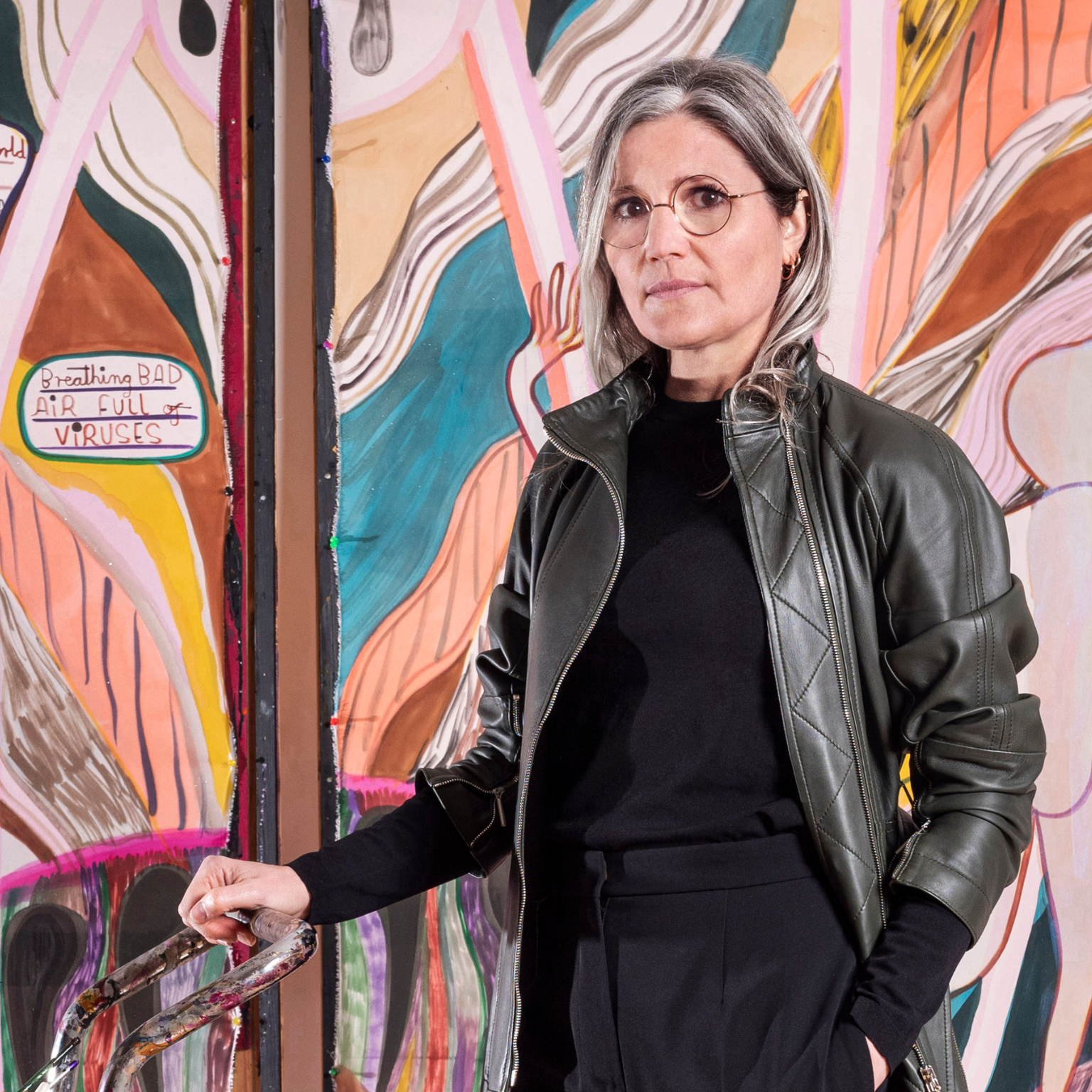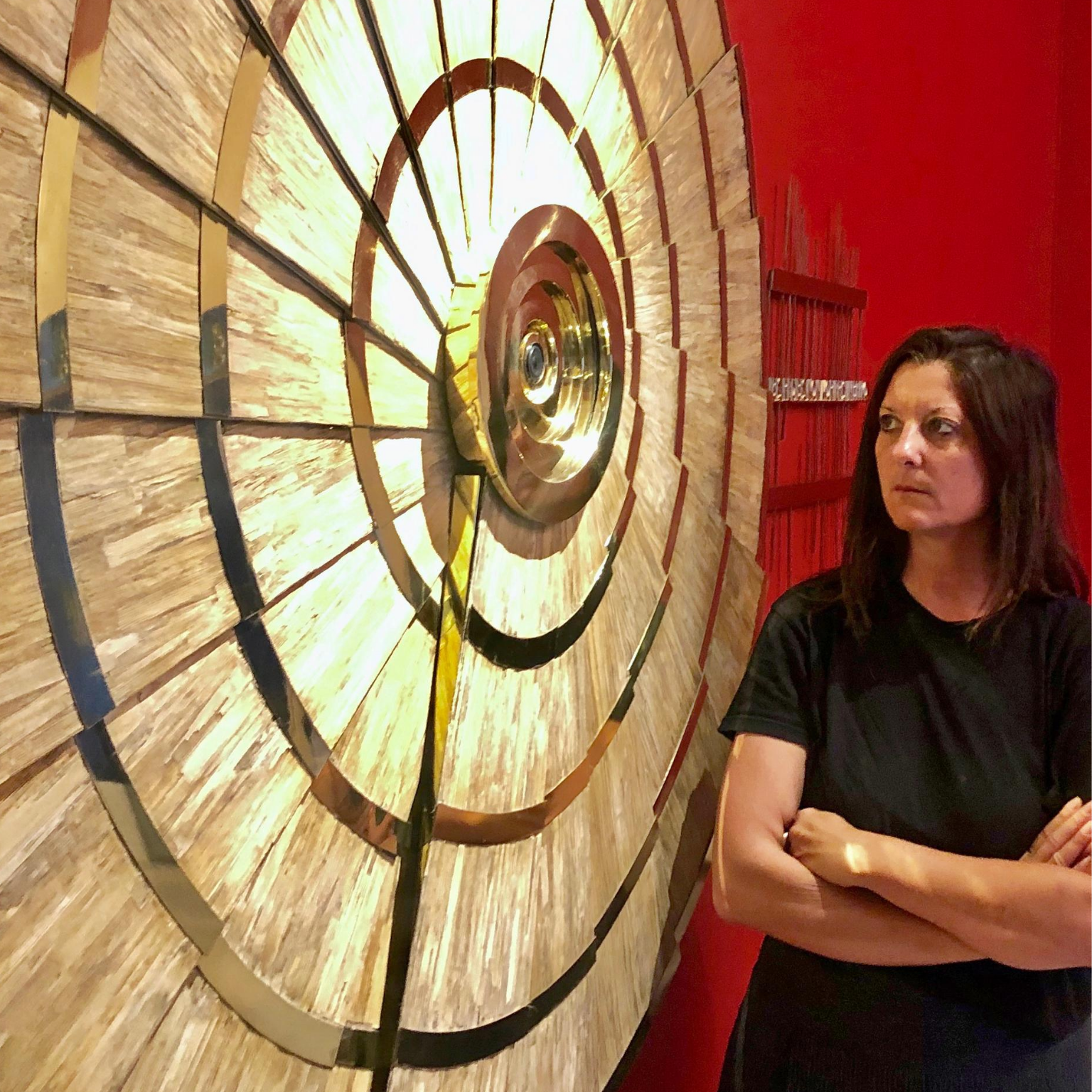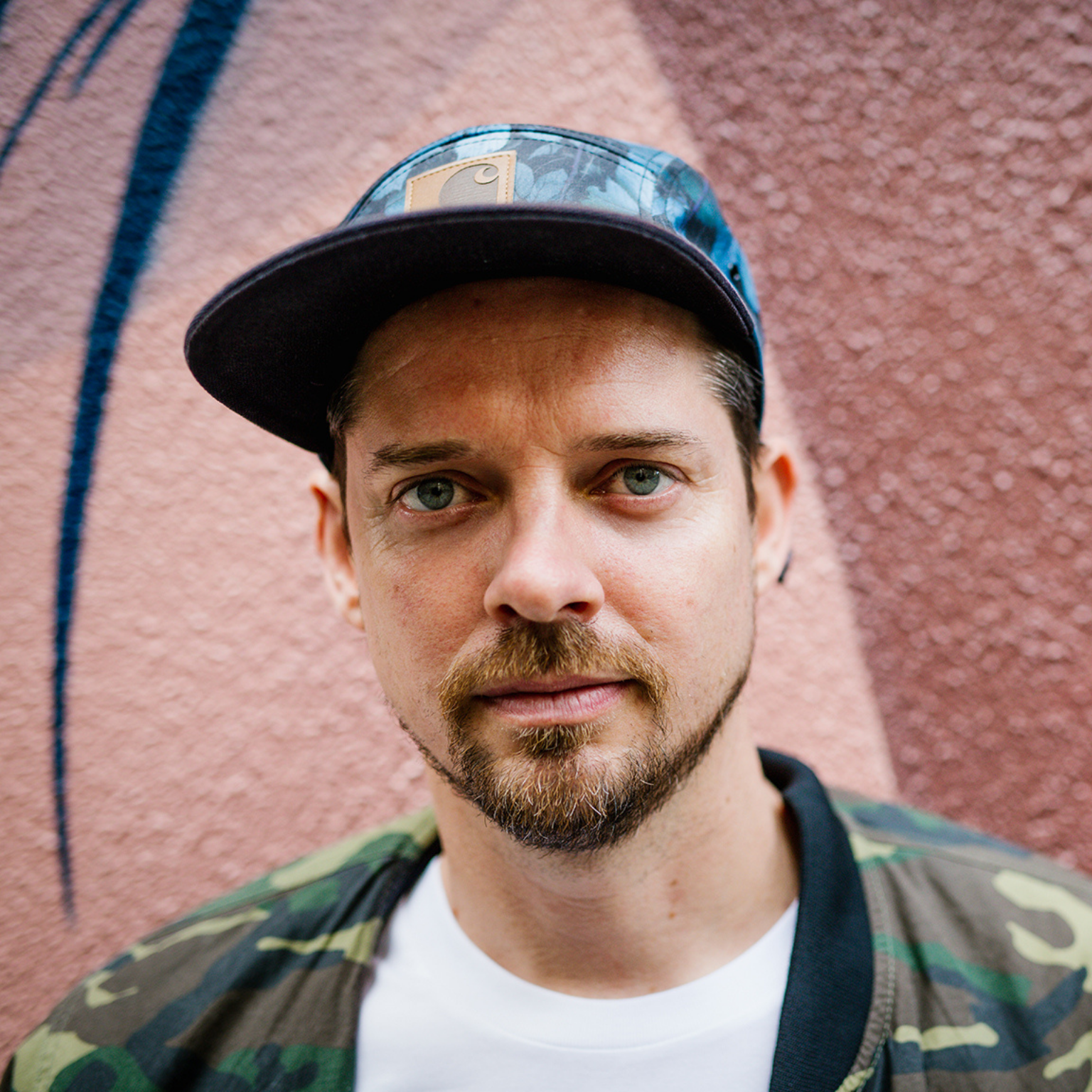Emma Talbot, artist from the United Kingdom. Photo © Thierry Bal
Tell us what you do and your beginnings.
I make paintings on silk, large-scale installations, 3D works (often forms made of fabric), watercolor drawings on khadi paper, and animations.
I’m from the UK and lived and worked in London for most of my life. I grew up in a family that wasn’t at all artistic, but I always really liked drawing and making things. When I left school, it was possible to get a government grant to study, and I chose an undergraduate degree in Fine Art in Birmingham and then did a master’s at the Royal College of Art.
After my MA I was awarded a Rome Scholarship at the British School in Rome for six months and did a fellowship in America for 6 months. I balanced my career as an artist with undergraduate teaching at Central Saint Martins, and Masters and doctorate teaching at the Royal College of Art for many years and had a family.
A turning point in my life was becoming a widow when my sons were 6 and 7. My work changed totally and became a way to explore what I was thinking and experiencing. Over time I developed the way I work now and it became a very central focus in my life.
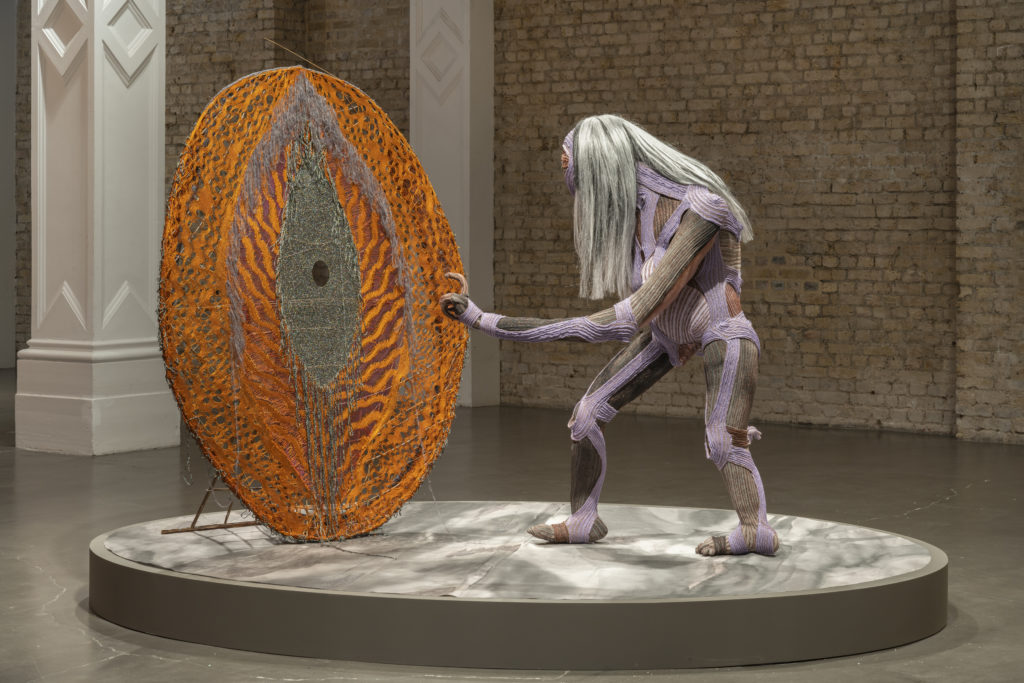
Three years ago, I won the Max Mara Art Prize and did a residency in Italy. I decided to establish a studio in Italy, where I also made work for the Venice Biennale. I now continue to work between London and Italy.
What does your work aim to say?
In my work, I try to capture the human experience of being alive in our period. Personal and subjective experiences (love, grief, anxieties, hopes) are cast into wider contemporary issues – concerns that affect all of us, such as our relationships with technology, nature, ecology, and the power structures that are at work.
I often depict a faceless woman who explores and tries to understand the world.
It’s an idea of me, trying to figure things out. The work uses images, text, objecthood, and sound, to try to mirror the layered way of think and experience – through sensory experience as well as visual and verbal.
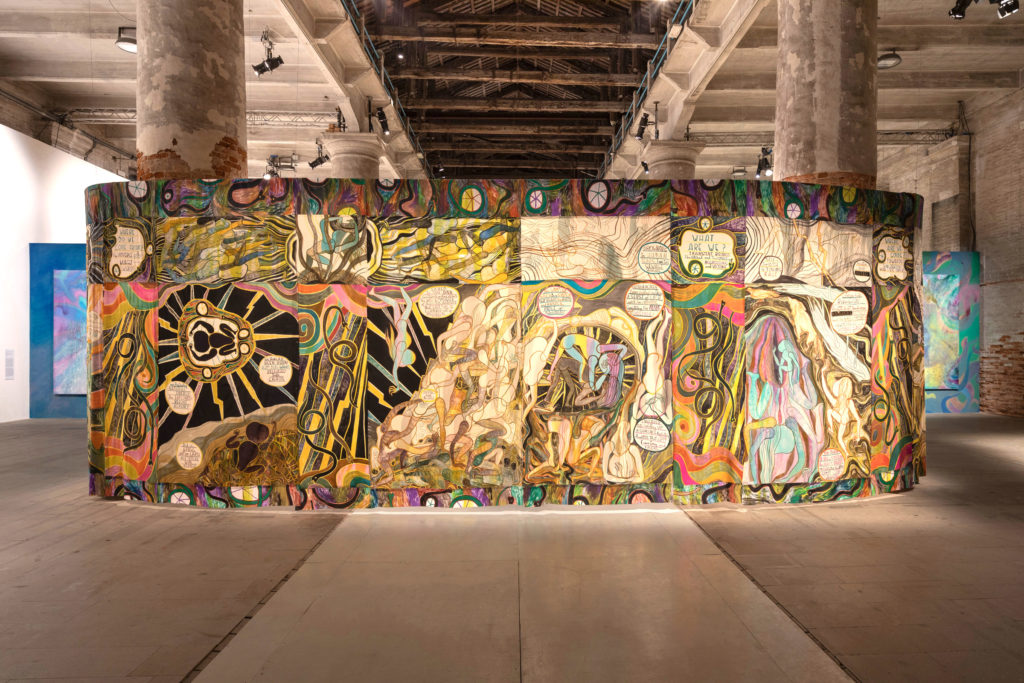
Where do you find inspiration for your art?
Inspiration can come from anywhere; from historical artworks or materials I find, medieval manuscripts, documentary information, from reading and thinking. Most of my ideas are explored through making drawings so I can see how to articulate what I’m thinking.
Could you give us some insight into your creative process?
I usually set aside some time to draw, with watercolors on khadi paper. I draw whatever comes to mind and after making a group of drawings I begin to see a set of ideas or a subject. Then I begin to research – online, reading, and visiting places, such as museums. While I’m thinking about a subject, I spend a lot of time reflecting on different ways to make artwork about it.
If I have imaginative ideas for 3D works or large-scale paintings, I like to work on them quite immediately without making too many plans. Sometimes I work with knitting specialists or metal fabricators to realize a piece.
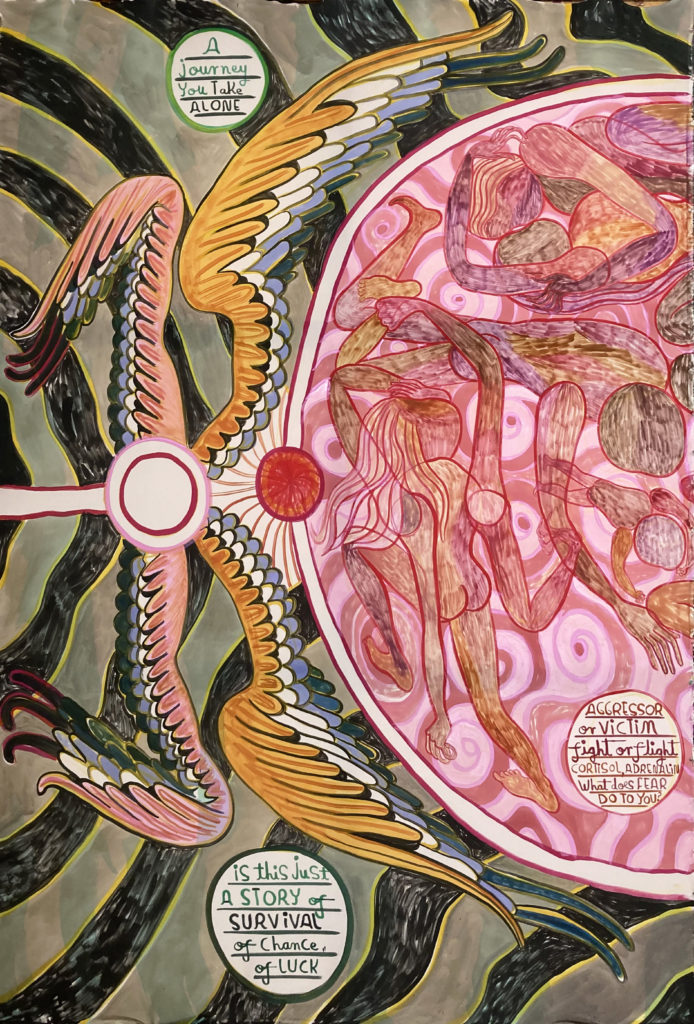
If it’s animation, I draw and photograph all the images, cut them out, and position them frame by frame using software. Once the animation is made, I make a digital soundscape that corresponds to the imagery and atmosphere I want to create.
What are your future projects?
I’m going to adapt the exhibition I am showing currently at Kesselhaus, Kindl Museum, Berlin for the huge space in Copenhagen Contemporary and I’m about to start working on new works for shows in the UK, Italy, and Holland.
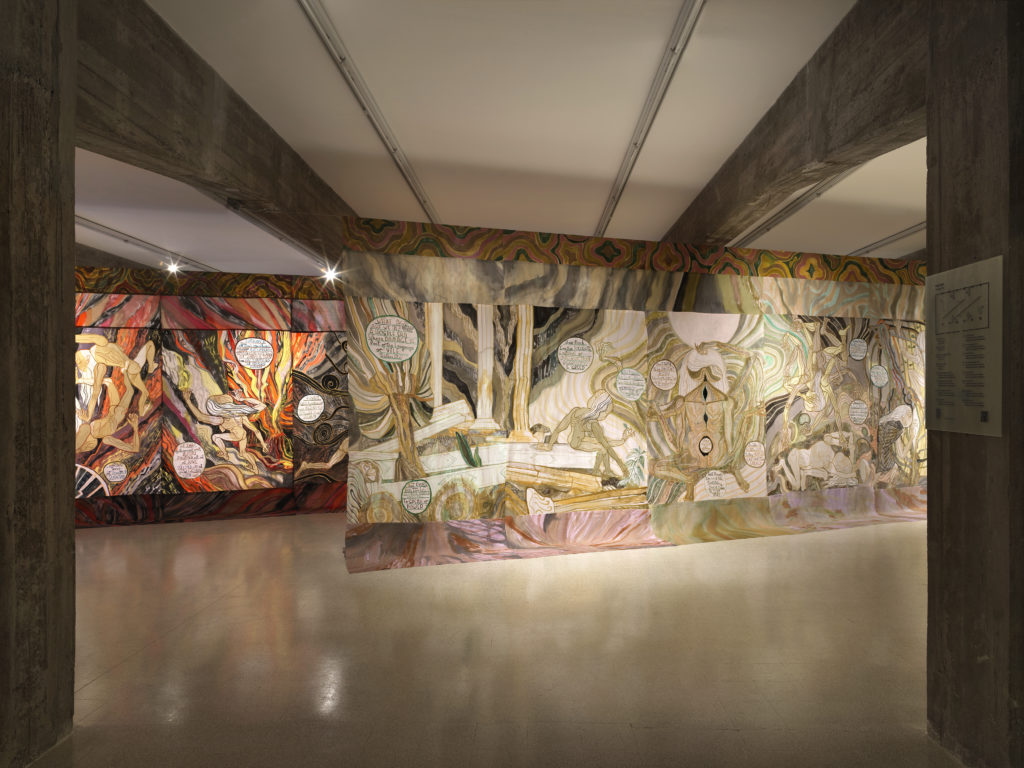
Interview by Fabio Pariante, Twitter / Instagram / Website
